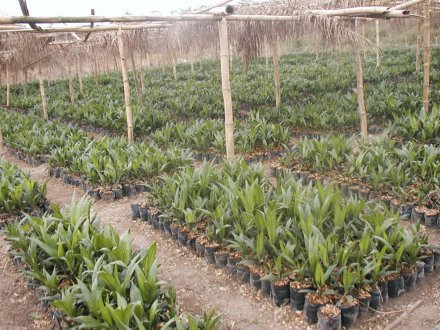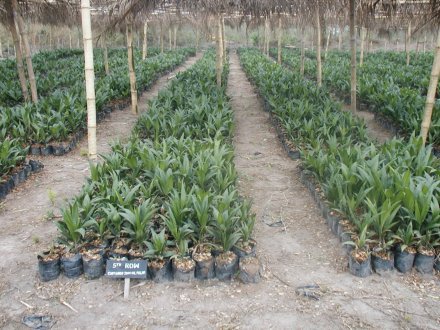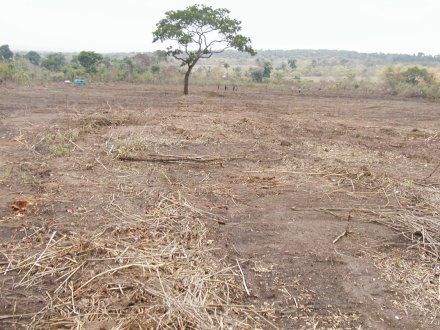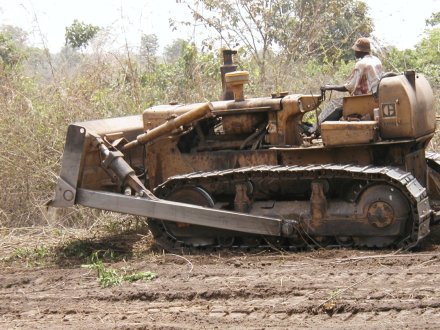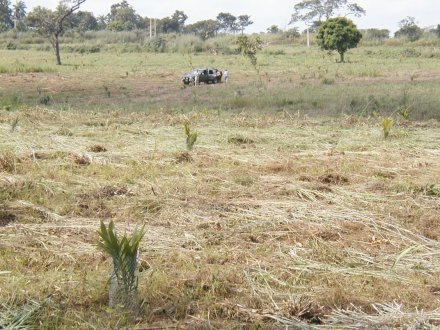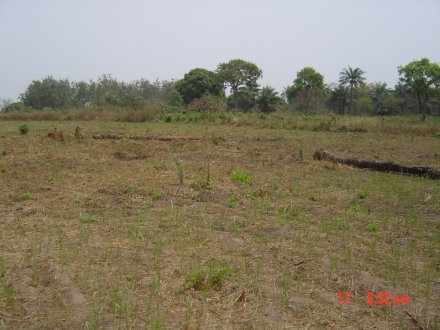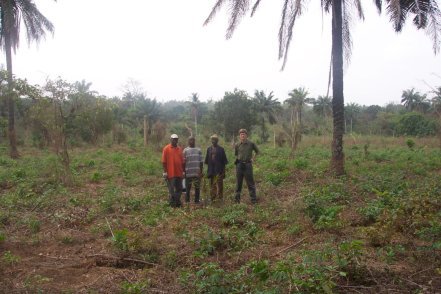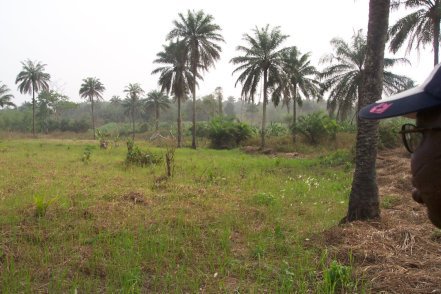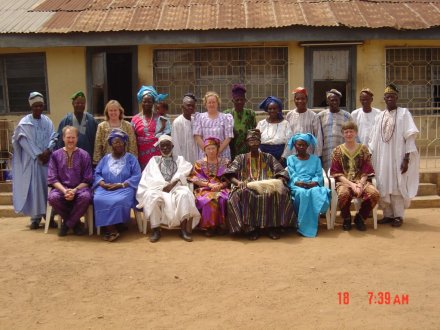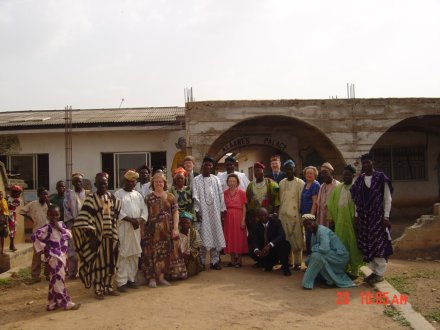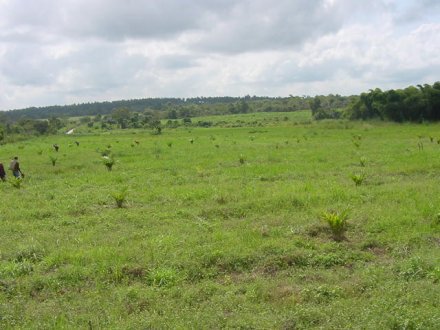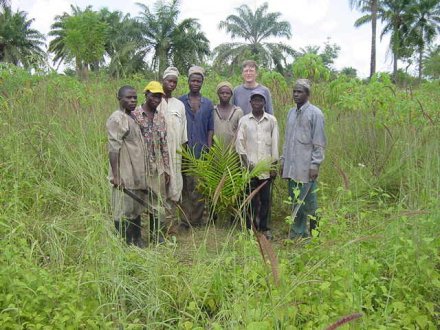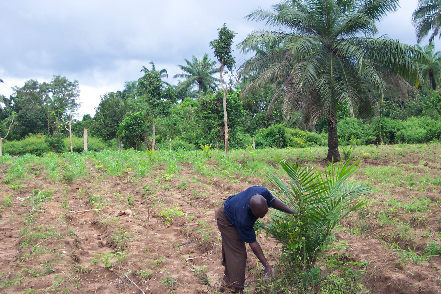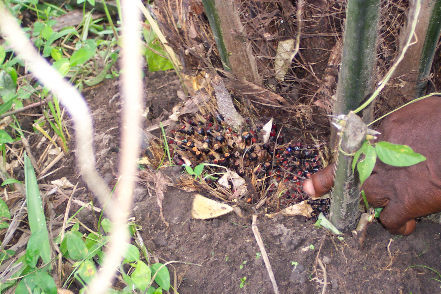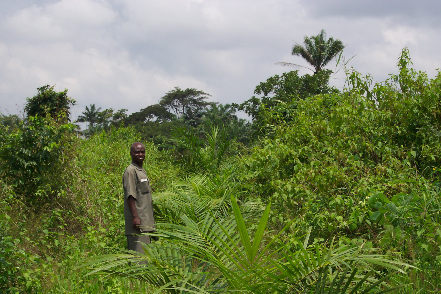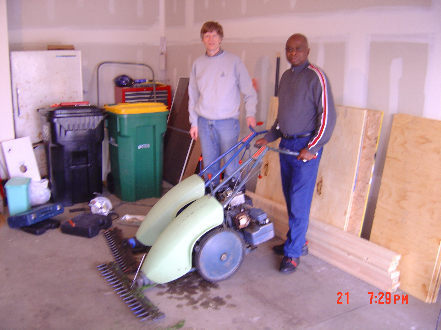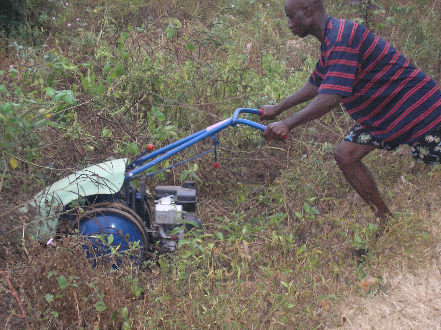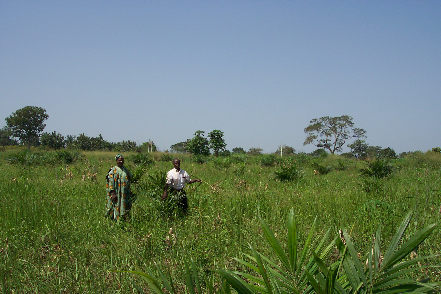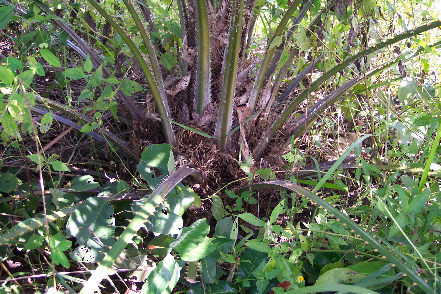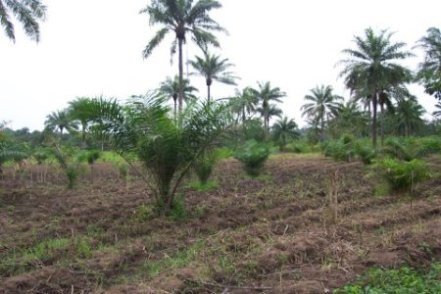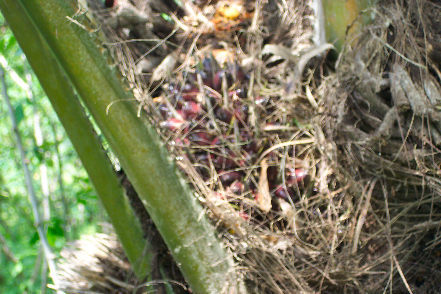In 2002, after getting encouragement
from the local chiefs and from the Oyo State government, we started
with 25,000 seeds purchased from the Nigerian Institute For Oil-Palm
Research (NIFOR), building a nursery on the grounds of the Good
Samaritan Mission Village in Fiditi, Oyo State, Nigeria.
Nursey
of approximately 25,000 seedlings, October 2002. Another view of the Nursery, on the site of the TGSSA Mission Village.
Agreements
with landowners and local chiefs were negotiated in the fall of 2002,
and clearing started, once the dry season began, in Februrary of 2003. Some clearing was done by hand, but some was done by a (somewhat
breakdown-prone) bulldozer.
Our
Awe farm is currently the largest, just over 100
acres. The bulldozer was not very reliable, but did
a good job leaving most of
the topsoil.
the topsoil.
Roughly
17,000 seedlings survived their year in the nursery, and about half of
them were moved into one of four farms between June and September of
2003. The following pictures show how the farms looked in February of
2004.
The
farm at Awe. Chicken wire protects the seedlings from rodents. Ogunkunle's farm, with a couple of downed trees among the seedlings.
Elder
Michael, Manager Segun, Deacon Olaoke and I at Olaoke's farm. Michael
is surveying the seedlings at the Omodeni (I) farm.
Meetings
with the local chiefs councils were important at the early stages of
the project, and we have continued to keep in contact.
Meeting
the the council of chiefs in
Fiditi.
Meeting the the council of chiefs at Awe.
Meeting the the council of chiefs at Awe.
By November of 2004, a lot of progress
could be seen. Also, we had by then planted the rest of the seedlings
from the nursery, mostly at the Awe
farm, but also adding a new farm, which we call Omodeni 2, in the
Fiditi area.
Awe
farm being cleaned in November 2004.
Work crew at a newly planted tree at the Omodeni 2 farm.
Work crew at a newly planted tree at the Omodeni 2 farm.
The trees by 2005 had grown a great deal,
and we began to see some fruit on the trees. Also, to reduce
maintenance costs, we arranged for significant parts of the various
farms to be cultivated by local farmers, who kept the area clean and
received the benefit of the harvest. A variety of crops were used,
including Casava, Maize, Tomatoes, and Peppers. The trees benefit from
the reduced competition and especially reduced fire hazard.
An area of the Awe farm being cultivated and kept clear by a local Some early fruit at the Awe farm (Oct 2005).
farmer.
farmer.
A
row of weeded trees at the Ogunkunle
farm.
We put in wells at most of the farms in order to have local access to
water. This is the well at Omodeni 1.
We put in wells at most of the farms in order to have local access to
water. This is the well at Omodeni 1.
Despite
our efforts, we were hit by a pretty serious fire at the Awe farm in
February 2006. Although many of the trees recovered thanks in part to
some unseasonal rain that fell shortly after the fire, the fruit
production in 2006 and especially early 2007 was seriously impacted. In an effort to further improve our clearing and fire prevention
capabilities, a pair of Jari sickle mowers were shipped over in June
2006, arriving in November 2006. More details on the mowers can be
found in the 2006 report. In the end, however, they are not well-suited to the task of clearing the jungle around the trees.
The
two mowers in the U.S. just before being crated up and shipped. Segun Opatola, our plantation manager, trying out one of the mowers.
Partly
due to the fire, not a lot of fruit was ripening on the trees in
November 2006. Some trees escaped the fire, though, and a few had a
nice harvest of bunches. In April 2007, we processed our first set of
fruit bunches and produced our first liter of palm oil!
Trees
at the Awe farm in November
2006.
A tree at the Awe farm with several bunches ripening.
A tree at the Awe farm with several bunches ripening.
More fires in February 2007
set back the trees again. Still, much more fruit was seen on trees by
October 2007 when compared to a year earlier, and the harvest reached nearly 1000 pounds of fruit and produced around 50 liters of oil.
The
Omodeni 1 farm in October
2007.
Some ripe fruit on a tree at the Olaoke farm, October 2007.
Some ripe fruit on a tree at the Olaoke farm, October 2007.
The latest photos from October 2007 can be found on the photos page.


